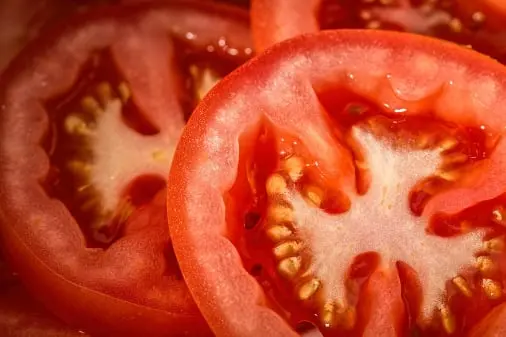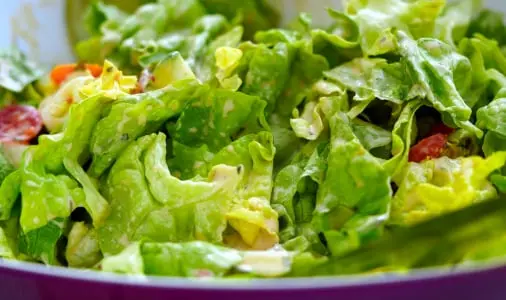Salad quality inspection app with AI quality management for salad packers:
Salad quality inspection app with AI quality management for salad packers, mixed leaf salads, and salad manufacturing. Reduce quality inspection costs. Eliminate waste, price negotiations, and QC mistakes. Maximize quality consistency.

Salad Quality inspections during production
View App Specifications.
SALAD QUALITY MANAGEMENT
Microbiological quality of open ready-to-eat salad vegetables: effectiveness of food hygiene training of management
During September and October 2001, a microbiological study of open, ready-to-eat, prepared salad vegetables from catering or retail premises was undertaken to determine their microbiological quality. The study focused on those salad vegetables that were unwrapped and handled either by staff or customers in the premises where the sample was taken. Examination of salad vegetables from food service areas and customer self-service bars revealed that most (97%; 2,862 of 2,950) were of satisfactory or acceptable microbiological quality, 3% (87) were of unsatisfactory microbiological quality because of Escherichia coli levels in the range of 10(2) to 10(5) colony-forming units per gram.

Daily Salad packhouse hygiene checklist
One (<1%) sample was of unacceptable microbiological quality because of the presence of Listeria monocytogenes at 840 colony-forming units per gram. The pathogens E. coli O157, Campylobacter spp., and salmonellas were not detected in any of the samples examined. The display area for most food service and preparation areas (95%) and self-service salad bars (98%) that were visited was judged to be visibly clean by the sampling officer. Most self-service bars (87%) were regularly supervised or inspected by staff during opening hours, and designated serving utensils were used in most salad bars (92%) but in only a minority of food service areas (35%). A hazard analysis system was in place in most (80%) premises, and in 61%, it was documented. Most (90%) managers had received food hygiene training. A direct relationship was shown between increased confidence in the food business management and the presence of food safety procedures and the training of management in food hygiene.

Salad Quality control & management
Quality assurance (QA) managers routinely have product and raw materials tested for undesirable bacteria. As long as the results are negative, it is easy to feel that all is right with the world and that the operation’s quality and safety systems are functioning correctly. In the ready-to-eat (RTE) salad marketplace, some customers are demanding microbiological testing as part of lot acceptance. These demands for testing are probably driven by past outbreaks and recalls. This testing comes in three basic flavors: raw material testing in the field, raw material testing at receiving and finished product testing. This article examines the deliverables of a typical acceptance program of each flavor, the attributes of a risk-based acceptance testing program and ultimately how to incorporate acceptance testing into a risk-based safety program.

Salad Supplier quality inspection & management
Discussions of acceptance testing can easily be complicated by focusing on the details and exactness of calculations. To partially avoid this pitfall, a simple case study has been included to assist the interested reader through the math as applied to a single lot. This article will call on this example to illustrate important points of discussion. Additionally, as noted in the discussion, other choices will be made without exploring all the alternatives in the interests of brevity. These choices do not change the conclusions of this article.
An analytical testing protocol is fundamental to any acceptance testing program, including those for examining the microbiological safety of RTE salad. In reality, no microbiological test procedure is perfect. There are always some false positives and false negatives in presence-versus-absence testing typically used in acceptance testing. To simplify this discussion, we will assume that both these error rates are negligible.